In the rugged world of climbing, boating, and outdoor adventures, the strength and reliability of your gear can mean the difference between conquering the challenge and facing disaster. Enter the realm of braided ropes, where the art of weaving threads into an intricate tapestry of durability has been mastered. Nylon and polyester braided ropes, in particular, stand out as the ultimate workhorses, delivering unparalleled performance in a wide range of applications.
But what sets these ropes apart from their twisted counterparts? The answer lies in their unique construction – a seamless, tubular braid that imbues them with exceptional strength, flexibility, and resistance to abrasion. And when it comes to the pinnacle of braided rope technology, the 3-strand braided rope reigns supreme, offering a perfect blend of power, agility, and longevity that has earned it a coveted spot in the arsenals of professionals and thrill-seekers alike.
In this comprehensive guide, we'll delve into the intricate world of nylon and polyester braided rope, unveiling the secrets behind their remarkable properties, the unique advantages of 3 braided rope, and the countless applications where these trusty companions shine. Whether you're an avid rock climber, a seasoned sailor, or an industrial professional demanding the utmost in performance, this guide will arm you with the knowledge to choose the right rope for your needs, ensuring optimal safety, durability, and peace of mind in your next challenge.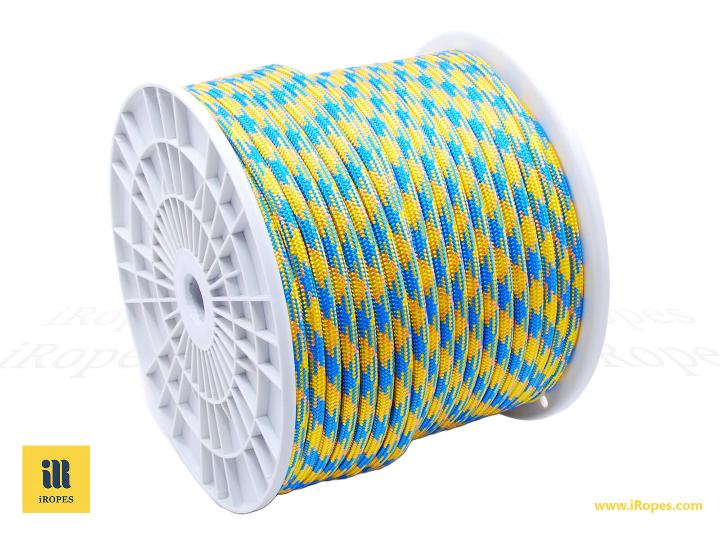
Understanding Braided Rope Construction
Have you ever wondered how those sturdy, flexible ropes you use for camping, climbing, or boating are made? The answer lies in the intricate process of braiding. Braided ropes are not your average twisted strands; they are carefully woven into a tubular structure that gives them their unique properties.
Unlike traditional twisted ropes, braided ropes are constructed by intertwining fibers or strands in a diagonal pattern, creating a seamless, uniform tube. This braiding technique results in a rope that is more flexible, less prone to kinking, and often stronger than its twisted counterparts.
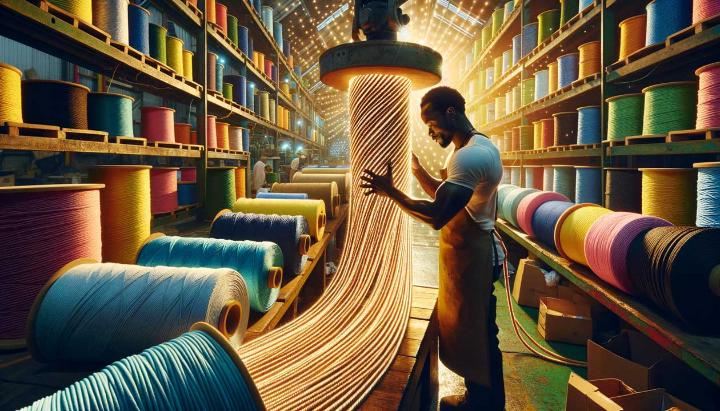
Different Types of Braided Ropes
Not all braided ropes are created equal. The braiding pattern and the number of strands used can vary, resulting in different types of braided ropes with unique characteristics. Some common examples include:
- Solid braid: A tightly woven braid with no central core, offering excellent strength and resistance to crushing.
- Diamond braid: A distinctive braid pattern that resembles a diamond-shaped cross-section, known for its flexibility and resistance to kinking.
- Hollow braid: A braid with a hollow center, often used for applications that require lightweight and flexibility, such as in climbing ropes.
- Double braid: A construction that features an inner braided core surrounded by an outer braided jacket, providing exceptional strength and abrasion resistance.
Braiding Techniques and Processes
The art of braiding ropes is a precise and intricate process, often involving specialized machinery and techniques. In industrial-scale production, fibers or strands are carefully aligned and fed into braiding machines, which intertwine them in a predetermined pattern.
Factors such as tension, fiber alignment, and core materials play a crucial role in determining the final quality and properties of the braided rope. Skilled craftsmen and quality control measures ensure that each rope meets the required specifications and performance standards.
- [Standard braiding]
- [Core-braiding]
- [Plaiting]
Whether it's standard braiding, core-braiding, or plaiting, each technique brings its own unique characteristics to the final rope product, tailored to meet specific application requirements.
Properties and Characteristics of Nylon and Polyester Braided Rope
When it comes to braided ropes, nylon and polyester are two popular materials that offer distinct properties and characteristics. Understanding these differences is crucial for selecting the right rope for your specific needs.
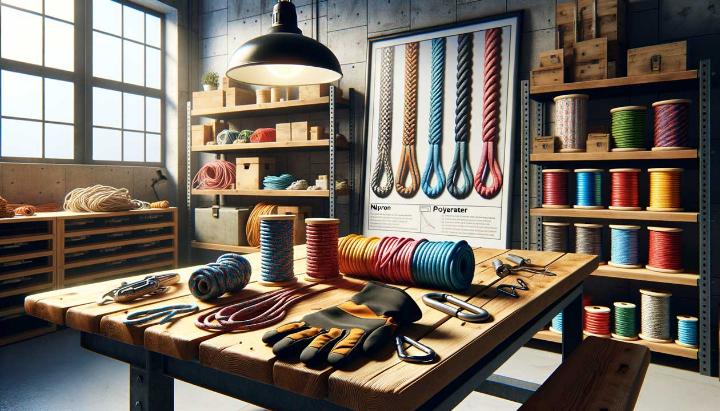
The braided construction itself provides enhanced strength, durability, and resistance to abrasion compared to twisted ropes. But let's dive deeper into the unique qualities of nylon and polyester braided ropes.
Nylon Rope Properties and Characteristics
- High flexibility and stretchability: Nylon ropes are known for their excellent flexibility, making them ideal for applications that require a rope to bend and conform to various shapes. They also have a higher degree of elasticity, allowing them to stretch and absorb shock more effectively.
- Superior shock absorption: Due to their stretchy nature, nylon ropes can effectively dissipate energy from sudden impacts or loads, reducing the risk of breakage or damage.
- Moderate UV resistance: While not as UV-resistant as polyester, nylon ropes offer decent protection against sun exposure, making them suitable for outdoor applications with moderate UV exposure.
- Higher water absorption: Nylon ropes have a tendency to absorb more water compared to polyester, which can affect their weight and handling characteristics when wet.
Nylon braided ropes excel in applications where flexibility, shock absorption, and moderate UV exposure are essential factors, such as sailing, rock climbing, and various outdoor pursuits.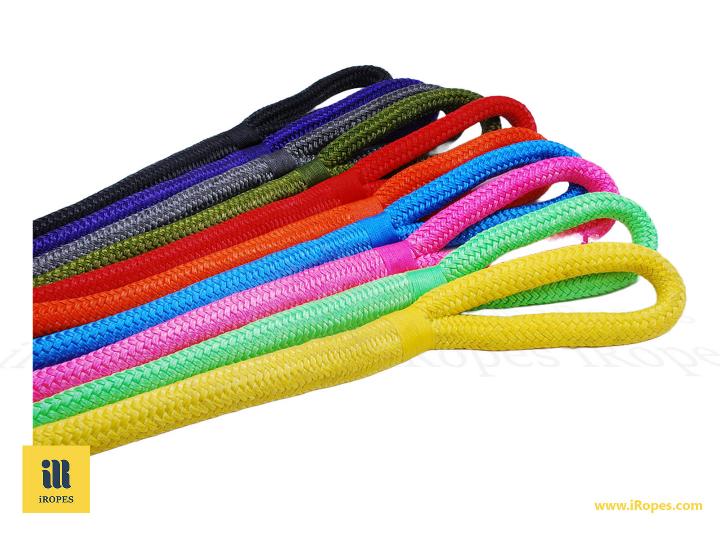
• The ultimate Kinetic recovery rope is double-braided with rubber tube to replace
wrapped yarn that is used to fasten eye splice, which has no influence on its
breaking load compared to the old one.
• Also, The double braided rope is made of polyamide which offers unrivalled elongation characteristics and its cover is coated that provides great protection from
abrasion,UV and other external damages.
• Designed for vehical recovery by the transfer of kinetic energy which then transferred
into the rope and which subsequently transfers to the stuck vehical, so it is
easier to free stuck vehical and ideally suitable for pulling.
MATERIAL: Nylon core Nylon cover
CONSTRUCT: 12/24x2
ELONGATION: 30%
Polyester Rope Properties and Characteristics
- Moderate flexibility: While not as flexible as nylon, polyester ropes still offer a decent level of flexibility, making them suitable for various applications that require some degree of bending or conformity.
- Lower shock absorption: Polyester ropes have a lower degree of stretch and elasticity, making them better suited for static applications where shock absorption is not a primary concern.
- Excellent UV resistance: Polyester ropes are highly resistant to UV radiation, making them an ideal choice for outdoor applications with prolonged sun exposure, such as marine and industrial settings.
- Low water absorption: Unlike nylon, polyester ropes have a low water absorption rate, which means their weight and handling characteristics remain relatively unchanged when wet.
Polyester braided ropes are preferred in applications where UV resistance, low water absorption, and consistent performance under static loads are paramount, such as mooring lines, rigging, and heavy-duty industrial applications.
Comparison
While nylon ropes offer superior flexibility, stretchability, and shock absorption, polyester ropes excel in UV resistance, low water absorption, and consistent performance under static loads. Consider your specific application requirements when choosing between these two materials. For a detailed comparison, explore our guide on Synthetic Rope vs Steel Wire: Benefits and Best Uses.
By understanding the unique properties and characteristics of nylon and polyester braided ropes, you can make an informed decision and select the rope that best suits your needs, ensuring optimal performance, durability, and safety in your intended application.
Exploring the Unique Features of 3-Strand Braided Rope
Have you ever wondered what makes those trusty ropes you rely on for climbing, boating, or outdoor adventures so sturdy and reliable? The secret lies in the intricate braiding process, specifically the unique construction of 3-strand braided ropes.
What is a 3-Strand Braided Rope?
As the name suggests, a 3-strand braided rope is crafted by carefully intertwining three strands of high-quality material, typically nylon fibers, into a seamless tubular braid. This construction method sets it apart from traditional twisted or laid ropes, resulting in a rope that is not only stronger but also more flexible and smoother.
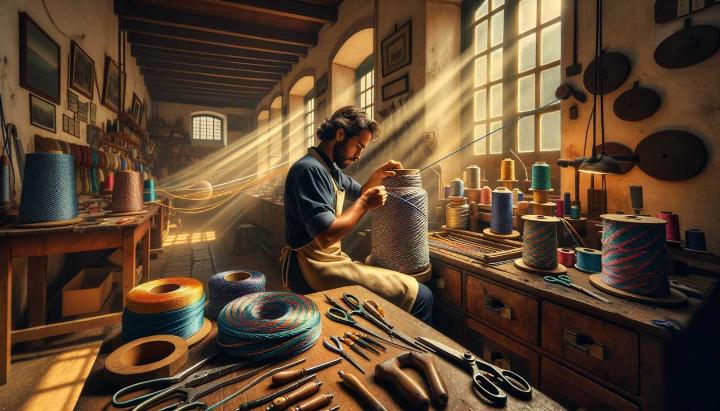
The magic behind the strength and durability of 3-strand braided ropes lies in the ingenious fiber alignment created during the braiding process. As the three strands are intricately woven together, the fibers align in a single direction, creating a "Chinese finger trap" effect. This unique fiber alignment enhances the rope's strength and resistance to abrasion, making it a reliable choice for demanding applications.
Benefits and Advantages of 3-Strand Braided Rope
- Increased strength: The strategic fiber alignment and seamless braided construction contribute to a significantly higher tensile strength compared to twisted or laid ropes of the same diameter.
- Improved flexibility: The braided design allows for greater flexibility and bendability, reducing the risk of kinking or snagging, even under heavy loads.
- Smooth surface texture: The uniform tubular structure and tightly woven strands result in a smooth surface texture, making these ropes easier to handle and less prone to snagging on surfaces or equipment.
- Superior abrasion resistance: The aligned fibers and tightly braided construction create a rope that can withstand harsh conditions and resist wear and tear, prolonging its lifespan.
With such impressive features, it's no wonder that 3-strand braided ropes are widely used in various industries and applications. From marine and boating operations to industrial rigging, climbing gear, and safety equipment, these ropes offer a perfect balance of strength, flexibility, and durability.
Expert Advice
When selecting a rope for your next adventure or project, consider the unique benefits of 3-strand braided ropes. Their exceptional strength, flexibility, and abrasion resistance make them a reliable choice for a wide range of applications, ensuring your safety and peace of mind. For more on versatile rope options, check out our article on the Versatility of Synthetic Jute Rope and Jute Cord.
Whether you're scaling rocky cliffs, navigating choppy waters, or tackling industrial challenges, a 3-strand braided rope can be your trusty companion, offering the perfect blend of performance and reliability. So, why settle for less when you can have the best in the game?
Common Applications and Uses of Nylon and Polyester Braided Ropes
When it comes to braided ropes, nylon and polyester are two popular synthetic materials that have carved their way into countless applications, thanks to their unique properties and strengths. As avid outdoor enthusiasts or professionals working in demanding environments, you've likely encountered these trusty ropes in action. But do you truly understand the subtle differences that make each material shine in its own way?
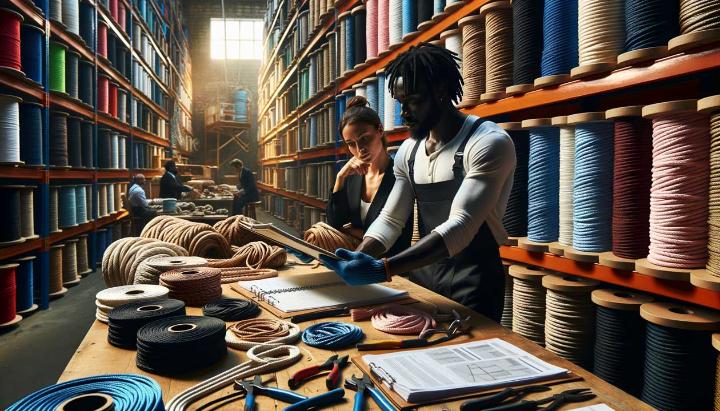
While both nylon and polyester braided ropes offer exceptional strength and durability, their unique characteristics make them shine in different scenarios. Imagine you're setting up a campsite in the great outdoors – the flexibility and shock absorption of nylon ropes would be invaluable for securing your tent and handling dynamic loads. On the other hand, if you're a seasoned sailor braving the open waters, the UV resistance and low water absorption of polyester ropes would be your go-to choice for reliable mooring lines and rigging.
Nylon Rope Applications and Uses
- Lifting and towing: The stretchy nature of nylon ropes makes them ideal for applications that require shock absorption, such as lifting heavy loads or towing vehicles.
- Mooring and fishing: Their flexibility and resistance to kinking make nylon ropes a popular choice for mooring lines and fishing applications, where the rope needs to bend and conform to various shapes.
- Industrial slings: The strength and durability of nylon ropes make them suitable for use in industrial slings, where they can safely handle heavy loads and withstand tough environments.
- Outdoor pursuits: From rock climbing to camping, nylon braided ropes are a reliable companion for outdoor enthusiasts, offering a perfect balance of strength, flexibility, and moderate UV resistance. For advanced climbing gear, you can explore our high-quality arborist ropes and climbing ropes.
Polyester Rope Applications and Uses
- Mooring and rigging: Polyester ropes shine in marine applications, where their low water absorption and excellent UV resistance make them ideal for mooring lines and rigging systems.
- Industrial plant use: In industrial settings, polyester braided ropes are often used for static applications, such as overhead lifting systems or securing heavy machinery, thanks to their consistent performance under static loads.
- Marine applications: From sailboats to commercial vessels, polyester ropes are a go-to choice for various marine applications, ensuring reliable performance and longevity in harsh saltwater environments.
- Arborist and tree work: The abrasion resistance and durability of polyester ropes make them well-suited for arborist work, where ropes are subjected to constant friction and wear.
Expert Tip
Remember, the key to selecting the right rope lies in understanding the demands of your specific application. Nylon ropes excel in dynamic environments that require flexibility and shock absorption, while polyester ropes thrive in static applications where UV resistance, low water absorption, and consistent performance are paramount.
Whether you're an adventurer seeking adrenaline-pumping thrills or a professional working in demanding industries, understanding the unique applications and strengths of nylon and polyester braided ropes can empower you to make informed choices. By selecting the right rope for the job, you can ensure optimal performance, safety, and peace of mind, no matter what challenges lie ahead.
Discover the Best Rope for Your Needs
If you’re looking to choose between nylon and polyester braided rope, this comprehensive guide has you covered. Learn about the differences in strength, durability, UV resistance, and water absorption, and explore the unique features of 3-braided rope to find the best fit for your specific applications. You’ll understand why these ropes are popular for marine, industrial, and recreational uses, ensuring you make an informed decision. Fill out the form above for more information and personalised rope recommendations!